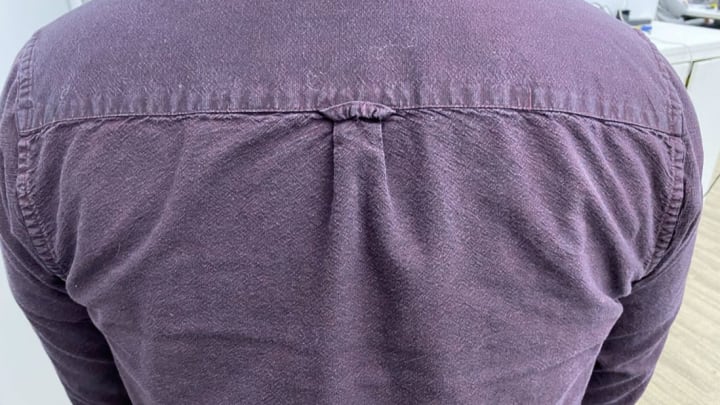The apparel industry has presented a number of intriguing mysteries over the years. We’ve previously covered why clothes shrink in the wash, deciphered the laundry care tags on clothes, and figured out why shorts cost as much as pants. But one enduring puzzle persists: What’s with that weird loop on the back of button-down shirts?
The loop, which is found on many dress shirts for both men and women, is a small piece of fabric that typically occupies the space between the shoulder blades, where the yoke (upper back) of the shirt meets the pleat. While it can be an excellent way to annoy someone by tugging on it, history tells us it originally had a much more pragmatic function. The loops first became popular among naval sailors, who didn’t typically have much closet or storage space available for their uniforms. To make putting away and drying their shirts easier, the loops were included so they could be hung from a hook.
The loops didn’t remain exclusive to the Navy, however. In the 1960s, clothing manufacturer GANT added what became known as a locker loop to their dress shirts so their customers—frequently Ivy League college students—could hang the shirts in their lockers without them getting wrinkled. (The loop was originally placed on the back of the collar.) Later, students repurposed the loops to communicate their relationship status. If a man’s loop was missing, it meant he was dating someone. Women adopted an apparel-related signal, too: wearing their boyfriend’s scarf to indicate they were taken.
Particularly enthusiastic partners would rip the loop off spontaneously, which became a bit of a trend in the ‘60s. At the time, women who had crushes wearing Moss brand shirts complained that their loops were so strong and secure that they couldn’t be torn off.
For people who wanted to have a loop without ruining a shirt, one mail-order company offered to send just the loops to people in the mail.
You can still find the loops on shirts today, though they don't appear to have any social significance. Should you find one that's torn, it's probably due to wear, not someone's relationship status.
